Running a hotel is sometimes like flying a plane. Just as the captain uses a compass and instruments to find his bearings, the hotelier must rely on a certain number of performance indicators. Among these, RevPAR and TRevPAR are essential.
The first represents income generated by room rentals. The second adds the income generated by all the hotel’s services (bar, restaurant, spa, etc.). Without these two elements, it is difficult to know how profitable a hotel establishment is. Here’s everything you need to know about the RevPAR and TRevPAR metrics.
What is Revenue Per Available Room, or RevPAR?
Let’s start by looking at RevPAR. Revenue Per Available Room refers to the income received from the dry rental of available rooms. For a long time, hoteliers were content to take into account the average daily rate and the occupancy rate. The hotel industry took the view that the higher the OTR and average daily gross revenue, the better the turnover.
However, RevPAR is a much more effective way of assessing a hotel’s economic performance, since it takes into account both metrics simultaneously. To calculate your RevPAR, simply apply the following formula:
Average daily rate (ADR) x occupancy rate = RevPAR
RevPAR has several advantages. Firstly, it is simple to calculate and interpret. What’s more, it provides a standardised measure, which is very useful for comparing the revenues of several establishments in the same hotel chain, even if they have different numbers of rooms.
RevPAR is a particularly useful performance tool for decision-making. Mainly used by the Lodging Director or Yield Manager, this metric makes it possible to monitor the market and adjust the pricing strategy in line with demand.
However, it is worth noting that RevPAR quickly reaches its limits and cannot be used as a reliable indicator of a hotel’s financial health. RevPAR indicates gross revenue, but it does not take into account the operating costs of maintaining rooms or the management costs inherent in a hotel. What’s more, RevPAR does not include income from other hotel services such as room service, laundry, bar, etc.
How do you define TRevPAR, or Total Revenue Per Available Room?
Unlike RevPAR, TRevPAR includes the results of a hotel as a whole. This means that all the revenue generated by the hotel’s various departments is taken into account, making it an effective performance indicator that is much appreciated by hotel directors and revenue managers.
To calculate your Total Revenue Per Available Room, apply the following formula:
Total net hotel revenue / number of rooms available = TRevPAR
This gives you a more holistic view of your company’s financial performance. What’s more, TRevPAR is an excellent indicator for comparing the different sectors of activity within your business.
It gives you a clearer picture of your hotel’s most lucrative services and makes it easier to take operational decisions. It’s also easier to allocate resources to services and optimise your commercial strategy.
Like RevPAR, TRevPAR has its limitations. It does not take into account the management costs of your establishment, but focuses solely on gross revenue. What’s more, calculating TRevPAR can be laborious, especially for large hotels, because collecting the data can be complicated if you don’t have high-performance hotel software.
Which performance indicator should a hotel choose between RevPAR and TRevPAR?
In order to know which hotel performance indicator to choose, you need to clearly define your objectives. First and foremost, you need to know how to maximise your hotel’s turnover.
To do this, you need to make a trade-off in order to direct your sales towards the sector that will offer you the highest margin. Should you sell a room for €400 a night without generating upsell to other services, or can you afford to offer your room for €100 while directing your customers to the restaurant, spa, bar or seminar room hire?
If your clientele is mainly made up of MICE (Meetings, Incentives, Conferences and Exhibitions) professionals or individuals, then it’s best to focus on TRevPAR, which will take into account not only your room rental income, but also all the services relating to events.
Whatever the case, each metric provides different information about the financial health of a hotel establishment. Thanks to these performance indicators, you have all the tools you need to make strategic decisions, such as installing new equipment, marketing communications, expanding your services or creating new partnerships.
Why is it more advantageous to focus on TRevPAR for MICE?
Establishments with seminar rooms and conference centres have everything to gain by focusing on their TRevPAR. In fact, the revenue generated by event services such as room hire, group catering, entertainment, etc., is generally higher than simply renting out a room.
For establishments with a high level of MICE activity, it may be a good idea to equip yourself with specific software which, in addition to monitoring indicators such as TREVPAR, will help you to optimise your sales.
Intuitive and quick to learn, Backyou is hotel software specialising in MICE management. Ideal for helping you calculate your metrics, Backyou records your group bookings and lets you extract all your data quickly and easily:
- Your occupancy rate;
- The number of rooms rented and available ;
- The amount allocated per room and per group ;
- Total revenue generated over a given period ;
- Income generated by the restaurant or bar;
- Income generated by the rental of function rooms ;
- Additional services: spa, services, etc.
Would you like to find out more about our group and event management tool? Request your demo now and triple your management efficiency!








